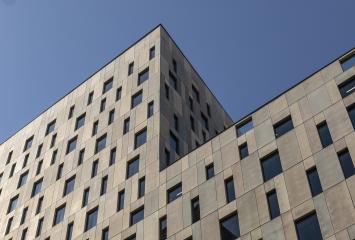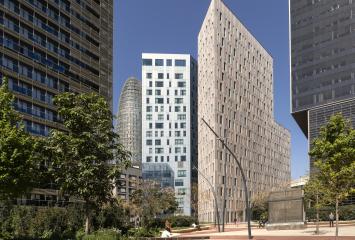Folklore in Office Design: The Benefits of Localism
Cultural diversity is one of humanity's greatest riches, and offices, far from acting as generic spaces independent of regional idiosyncrasies, should incorporate local elements that provide them with an organic identity within their surroundings. It's not just a matter of aesthetic inclusion but also one of human well-being. People have an innate taste for authenticity, and there is nothing more authentic in a specific context than what originated there. In this sense, incorporating local folklore into the office through design positively impacts the performance of workers and, consequently, the performance of organizations.
Sounds of the Locale
Sounds greatly influence people's mood, and folk sounds can leverage this relationship for a stronger sense of community. For example, using traditional music from the area in break rooms, recreational areas, or informal meeting rooms. Buddhist pieces in a Chinese office. Flamenco pieces in a Cadiz office. Or Maori pieces in a New Zealand office. Additionally, ambient sounds from the outside can also be encouraged when pleasant.
Thematic Decorations
Each region presents different cultural symbols: characters, geometries, colors, etc. The idea of localistic design is to incorporate those specific to the region where the building is located to connect it with the local spirit. However, it's important to carry out this process with care and respect to avoid generating stereotyped images of cultures. To achieve this, it's crucial to have designers from the region or with in-depth knowledge of it so they can project a realistic concept of its visual world.
Native Vegetation
The culture of a place arises in relation to a specific natural environment and is therefore inseparable from it. Arabia is incomprehensible without its deserts. Japan is incomprehensible without its cherry blossoms. And Mexico is incomprehensible without its hummingbirds. In this sense, localistic office design seeks the selection of native plants for two main reasons: they naturally enhance the local culture of the office and attract the local wildlife, further connecting the building with the personality of the place.
Local History
History is the foundation of culture. The way we narrate the past inevitably affects our perception of a community. That's why office design aiming for local authenticity should include elements that tell the story of the region and its people. From historical paintings to narrative murals and chronological infographics, local newspapers, or a library with books discussing local customs. The key is for the building's occupants to immerse themselves in the folkloric character.
Traditional Gastronomy
Local cultures also develop through the stomach: regional cuisine plays a fundamental role in the life and self-perception of communities. In this regard, office design can promote localism with creative decisions in the construction of kitchens that encourage workers to enjoy both local food and social structures during meals. For example, open kitchens in the United States and large wooden tables in Mediterranean countries.
Respect for Multiculturalism
Promoting local culture does not imply denying the rest of human cultures. Hence, the importance of understanding the diversity of the workforce and building offices sensitive to all cultural expressions. Especially when there are cultures with antagonistic elements, giving too much emphasis to one could be disrespectful to another. Ultimately, it is about fostering an inclusive environment and revaluing the local against the globalized. Cultures are preserved by practicing them, and it is everyone's task to contribute to such preservation.

